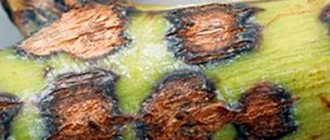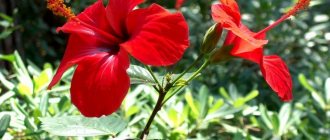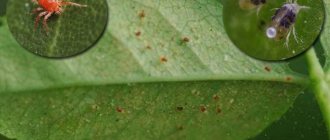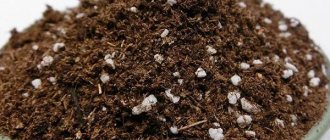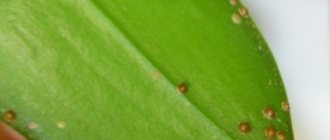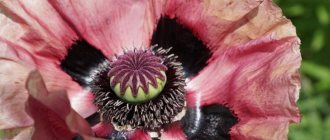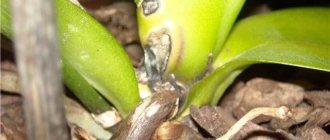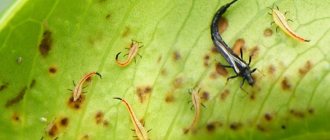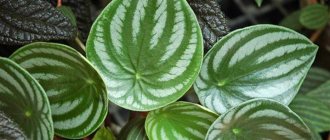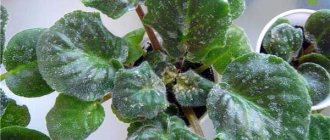One of the most attractive indoor plants for amateur gardeners in our country is cyclamen. An original plant with beautiful flowers has long and firmly taken its place on the windowsills of many apartments and has become a source of pride for their owners. However, this plant needs special attention, and responds to improper care with the appearance of various diseases that can negate all efforts to grow them. The only way to avoid cyclamen disease is to surround them with attention and provide proper care.
Description of the plant
You may be interested in: Does aloe bloom: description, flowering features, care, photos
Cyclamen is a herbaceous perennial with a tuberous thickened root. Perhaps it was due to the shape of its roots that it got its name. It grows naturally in the Mediterranean regions, but is better known as a houseplant.
This small, elegant flower with an interesting pattern on the leaves is valued for its high decorative properties. Its single flowers on long tall peduncles are distinguished by a variety of colors. While at first there were only species with red and white flowers, breeding has now produced varieties with different shades of pink, lilac and pale purple. The most common indoor flower is Persian cyclamen.
You may be interested in: Does aloe bloom: description, flowering features, care, photos
A distinctive feature of cyclamens is the fact that they bloom in the winter - from October to March.
The main causes of cyclamen diseases
All diseases of cyclamen occur, as a rule, due to non-compliance with the conditions of their maintenance. The main causes of diseases are:
- low air humidity;
- excessive watering;
- temperature violation;
- incorrect soil composition;
- improper care during the rest period;
- lack of lighting during the period of active growth and flowering.
Preventing cyclamen diseases is much easier than treating them. Therefore, the plant must be regularly inspected and, when the slightest signs of disease appear, promptly respond to them by adjusting the conditions of detention.
What to do for prevention?
Of course, it is better to prevent any disease than to treat it later. Therefore, it is worth mentioning separately about measures to prevent cyclamen diseases.
- First of all, you need to ensure that all the points of proper plant cultivation, which we described above, are observed.
- It is also necessary to regularly (at least once a week) carefully examine the cyclamen for the presence of diseases and attacks of various pests and respond to these changes in a timely manner.
- When a new “exhibit” appears in the collection of house plants, it must be quarantined for a month in order to be able to observe the development of the flower and eliminate ailments in time.
Your pet may also have other problems, the fight against which should not be put off. To help save cyclamen from death, we have prepared articles about plant diseases. Read about what to do in such cases:
- leaves curl or dry and inflorescences fade;
- The leaves turn yellow or the plant withers.
Maintenance during the rest period
In nature, active growth and flowering of cyclamens occurs in winter, which is characterized by cool weather and heavy rainfall. The plant perceives an increase in temperature as a signal of the onset of a hot, dry summer and begins to prepare for it. This feature is one of the reasons why problems arise with the content of cyclamens. In an excessively warm room, they stop blooming and try to shed their leaves, preparing for a dormant period. This fact must be taken into account when caring for a flower. Proper alternation of periods of growth with periods of rest and the creation of appropriate conditions during these periods will avoid many problems associated with cyclamen diseases and their treatment.
Rules of care
You may be interested in: Decembrist flower: how to propagate, care, photo
Cyclamen diseases will bypass you if the flower is provided with the following conditions:
- Correct lighting. During the active period, it should be bright, but exclude direct sunlight from entering the plant. Therefore, it is better to keep the flower in partial shade on windowsills facing east and west. On southern windows the plant will have to be shaded, and on northern windows there will be too little light for it.
- Temperature. In winter, during the period of active growth and flowering, the optimal temperature for cyclamens is +10 °C, the maximum limit is +14 °C. In summer, the ambient temperature should not exceed 25 °C. If possible, it is recommended to bury the pot with the plant in the garden, in a shaded place.
- Watering. It will require soft, settled water, the temperature of which should be a couple of degrees below room temperature. During the flowering period, the plant is watered so as to prevent the earthen clod from drying out or becoming waterlogged. Top watering is possible if it is done carefully so as not to soak the buds and tubers. It is better to water cyclamen from a tray. After holding the pot in the pan for one or two hours, drain the water from it to prevent rotting of the roots. When flowering ends, watering is gradually reduced, and with the onset of the summer dormant period, watering is extremely rare. From the beginning of autumn, watering is gradually increased.
- Air humidity. To increase it, the plant is periodically sprayed until the buds appear, after which the spraying is stopped so that the buds do not rot. To humidify the air, the pots can be placed on a tray with damp moss, expanded clay or pebbles so that their bottom does not touch the water.
- Feeding. When the plant is actively growing leaf mass and right up to the beginning of flowering, it is fed every two weeks with full mineral fertilizer. It must be remembered that an excess of nitrogen fertilizers can lead to rotting of the roots.
- The soil. Cyclamens should be replanted in soil consisting of leaf soil, humus, peat and sand. Soil acidity should not be higher than six, otherwise the likelihood of developing various fungal diseases increases.
Failure to follow these basic rules leads to various problems. Let's look at the main diseases of cyclamen with photos.
Cyclamen diseases
Cyclamen, like any other indoor plant, is not immune to various diseases. If you do not start treating the flower in time, you can lose it.
Among the diseases of cyclamen, it is worth noting the following infections that most often affect the flower:
- Gray rot. Signs: leaves turn yellow and become covered with a gray coating. Reason: high air humidity and low temperature of the plant. Treatment: removal of all affected parts of the bush and treatment of cyclamen with Fundazol. In addition, to prevent gray rot, you should avoid overwatering and regularly ventilate the room.
- Fusarium. The disease is also called Fusarium wilt. Signs: first the leaves turn yellow on one side, then the infection spreads to the entire leaf blade, and then it dies. Gradually, the cyclamen leaves fade. Cause: fungus. Treatment: cut off diseased leaves, water the bush with Fundazol solution, and generously spray the remaining leaves with Topsin-M.
- Wet rot. Signs: the bush begins to fade sharply and quickly, spreading a putrid odor. Reason: watering with contaminated water or a sick plant standing nearby. Treatment: if the bulb is damaged, saving the flower is very problematic. You can try to clean out the rotten areas, treat them with a fungicide and replant them in fresh soil. Otherwise, cyclamen must be isolated from other crops and destroyed so as not to spread the infection.
Rot
The most common diseases of cyclamen are various types of rot.
- Wet rot. Flowers and leaves droop, and an unpleasant putrid odor appears. The roots also gradually rot. The cause of the disease is infection getting into cracks or wounds on the plant. The source of infection is a diseased plant or contaminated water. Unfortunately, in this case it will no longer be possible to save the flower. It must be destroyed to prevent infection of other plants. Preventive measures - compliance with the irrigation regime, avoiding waterlogging of the soil.
- Gray rot. The plant becomes soft and watery, and a gray moldy coating forms on it. The disease is provoked by high humidity levels and too low temperatures. To combat the disease, remove all diseased leaves and flowers and treat the plant with a fungicide. Make sure that the air is dry, to this end, ventilate the room, avoiding drafts. To avoid the appearance of gray rot, you need to prevent excess moisture and water from getting on the tuber and leaves during watering.
- Non-infectious rot of tubers causes yellowing and wilting of the leaves. The tubers become brown and soft. The diseased plant is destroyed. As a preventive measure, you need to use the right soil mixture, follow the feeding rules, moisten the tubers less often, especially in the heat, and do not plant them at great depth.
Let's look at other fungal diseases of cyclamen and their treatment with photos.
Why doesn't cyclamen bloom?
Despite the fact that the plant has very beautiful and decorative leaves, their color and shape are not the main decoration of the bush.
Still, cyclamen is grown for its lovely butterfly flowers, and it’s a shame when they don’t want to appear. The reason for the lack of flowering in cyclamen may be the following factors:
- low level of indoor humidity;
- poor watering;
- high temperature (he doesn’t like this);
- pot too spacious;
- the corm is completely buried in the soil (in varieties for which this is unacceptable).
By adjusting these errors and creating comfortable living conditions for the plant, you will soon be able to see it blooming.
As you can see, we create most of the problems when growing cyclamen ourselves, without providing the plant with proper care. Fortunately, this can be corrected by promptly paying attention to the changes occurring in the flower. Surround your cyclamen with care, and it will delight you with gorgeous blooms.
Anthracnose
Increased temperature and humidity provoke the occurrence of this fungal disease. Outwardly it appears only with the beginning of flowering. If the flower stalks are affected by the fungus, they develop poorly, look twisted and turn yellow at the top. Buds do not appear, and existing ones do not bloom. Then the disease also invades the leaves. They turn yellow and dry out.
To save the plant, it is isolated, dried tissue is removed and treated with fungicides. Bring air humidity and room temperature in accordance with care requirements.
What to do if cyclamen leaves turn yellow and curl
If cyclamen leaves wither and turn yellow during the dormant period, then they simply need to be removed. If this happens during the growing season, it means that the plant is not being properly cared for . Perhaps in a room where there is too much humidity and dry air.
Cyclamen also withers due to excessive moisture or, conversely, drying out of the soil. If the leaves of the cyclamen turn yellow, this may also indicate that the cyclamen is exposed to direct sunlight or a lack of nutrients. This is also indicated by the fact that the cyclamen’s leaves are curled or the flowers are withering.
Late blight and other fungal diseases
One of the most common diseases and pests of cyclamen is the Phytophthora fungus. Favorable conditions for its development include too high temperature and air humidity, as well as excessively active feeding with fertilizers.
Externally, the disease manifests itself as a loss of elasticity and strength of the leaf plates, which later begin to dry out. The tuber becomes rotten.
To combat late blight, you need to temporarily stop watering, completely replace the soil in the pot, treat the plant with fungicides and maintain the required temperature and humidity in the room.
Dangerous fungal diseases of cyclamen also include rhizoctonia and fusarium. Methods for treating and preventing the former are similar to the treatment of late blight. Fusarium is very difficult to treat even with fungicides. It is easier to prevent it by adjusting the conditions in which the flower is kept.
What insects like to eat cyclamen?
Another problem when growing cyclamen is pests. The juicy leaves of cyclamen attract the attention of not only gardeners, but also various insects. By establishing who exactly attacked your flower, you can help it get rid of the “uninvited guests.” This can be done using a magnifying glass or by the nature of the changes occurring in the bush.
The appearance of a cyclamen mite is easy to notice by the following signs:
- first, the leaf plates begin to lose their shape and bend ugly;
- then they stop growing and become hard;
- the inflorescences fade, and the flower stalks become deformed (curved).
Unfortunately, most often it is not possible to get rid of the insect, since conventional insecticides and fungicides do not have the desired effect on it. All that remains is to voluntarily “kill” the plant in order to avoid infecting the entire flower collection.
If thrips appears on the cyclamen, the leaves of the plant:
- first covered with white dots;
- then they merge into gray-silver spots;
- begin to curl;
- gradually die off.
To combat thrips, use Aktara or Fitoverm. At the initial stage, when there are not very many pests, drugs can help get rid of them. In case of massive damage, the flower dies.
One of the most dangerous pests of cyclamen is the scale insect, primarily for the reason that it is generally impossible to get rid of it with the help of drugs.
Often gardeners do not even notice it until the flower begins to disappear. If you see convex growths on the petioles, peduncles or the back of the leaves, this is not a deformation of the plant, but a very dangerous enemy. The scale insect is covered on top with a strong semicircular shell that protects it. The insect is firmly attached to the flower, literally merging with it into one whole, and no chemicals will help here. The only way to get rid of scale insects on cyclamen is mechanically, by manually tearing them off. To facilitate the process, before removing the pest, it must be wiped with a swab dipped in alcohol. During removal, the soil under the bush should be covered so that the scale insect does not fall into the pot.
A common “guest” on cyclamen is aphids. These small white insects suck the juices out of the leaves, as a result of which they begin to curl and deform, becoming covered with a sticky coating, and young leaves appear small and also curved.
You can free cyclamen from aphids by regularly washing the leaf blades with a solution of green or laundry soap, additionally spraying the bush with Fitoverm.
Viral diseases
Among the diseases and pests of cyclamen, photos of which are presented below, special mention should be made of viral infections:
- Leaf bronze virus manifests itself as deformation of leaf blades, a brown pattern on them and necrosis of veins and tissues. Sick plants are destroyed.
- Ring mosaic virus. The leaves develop ring patterns that resemble fingerprints. The veins harden and the leaves crack. Sick plants should be destroyed.
The carrier of this virus is thrips. To prevent infection, special sticky traps for these pests are hung in places where plants are kept. In addition to thrips, there are other pests. Cyclamen diseases and the treatment of ailments caused by them also require special attention.
Where did the short flower stalks come from?
Watering regime is of considerable importance for cyclamen. You should not allow the soil to dry out completely and, conversely, flood the flower until it becomes a swamp. The combination of such conditions, together with the low temperature of the plant, leads to shortened peduncles of cyclamen.
If your flower has inflorescences blooming under the leaves on short peduncles, you need to adjust the watering.
Pests and their control
The most common pests of cyclamen are:
- Aphid. These insects are capable of literally sucking all the juices out of a plant in a matter of days. In large quantities, aphids cover the flower like a coating. As a result, it becomes deformed and may die. The plant should be washed under a strong stream of water and treated with an insecticide.
- Cyclamen mite. Due to its microscopic size, its appearance can only be noticed when a lot of individuals accumulate in one place. A cluster of yellow dust appears to form on the inner surface of the leaf. As a result, the leaves begin to change at the edges, the stems curl, and the buds fall off. To save the plant, you must immediately remove all its affected parts and spray it with an insecticide.
- Root root nematodes. Signs of their appearance are stunted growth and the formation of nodular swellings on the root that resemble beads. Unfortunately, such a plant must be destroyed.
Prevention of cyclamen diseases consists of proper care and compliance with all necessary maintenance requirements.
Source
Possible problems when growing cyclamen: causes and ways to eliminate them
Flower growers who have cyclamen in their collection of house plants know that this plant is quite demanding, which means that the slightest error in care immediately affects its appearance. We bring to your attention a brief instruction on the problems that arise when growing cyclamen and how to solve them. Flowers are like people, they also get sick and need our attention and care. By correcting the mistakes made and neutralizing the “enemy,” in most cases it is quite possible to save your pet and save it from death.

